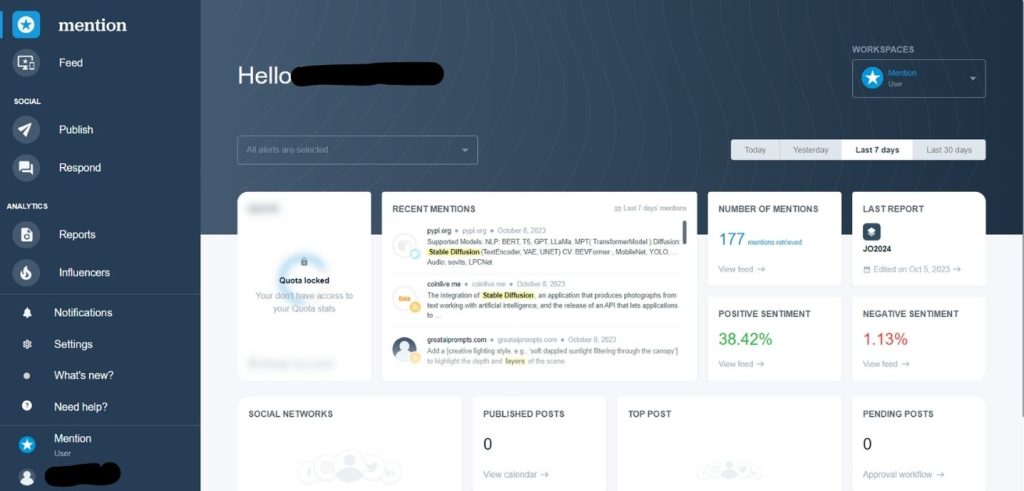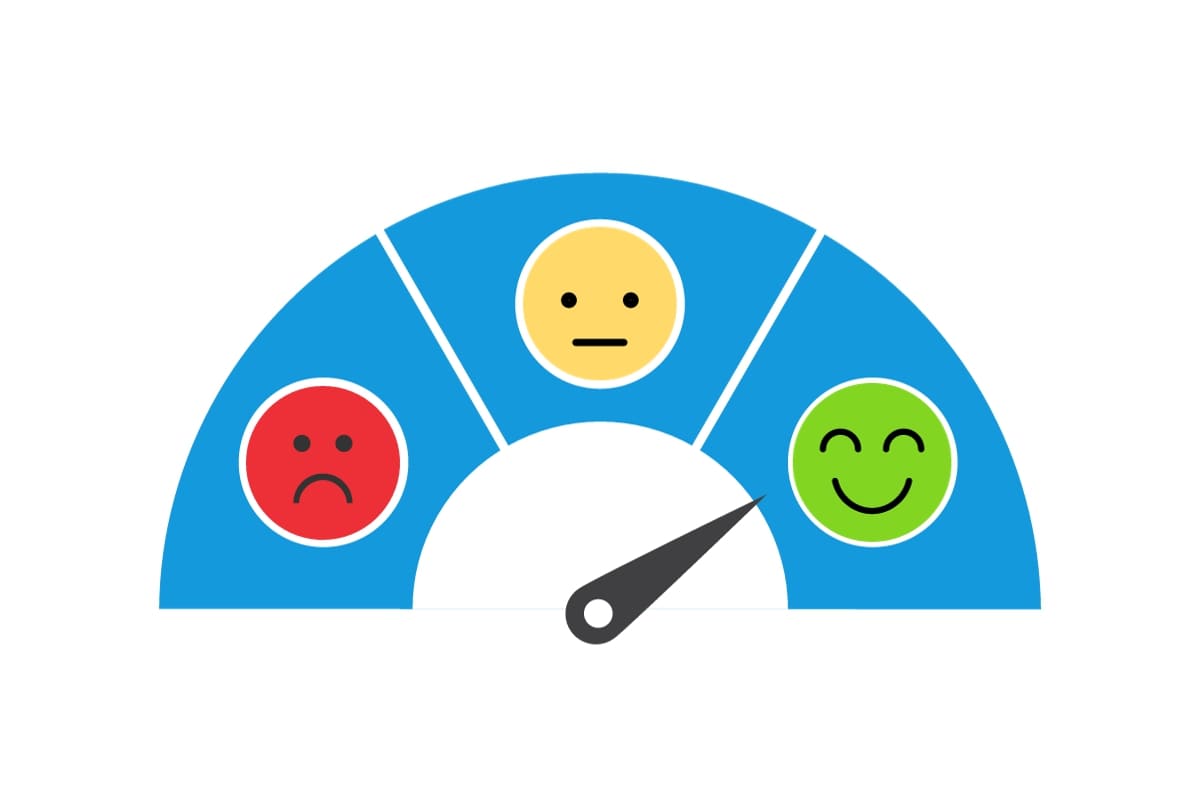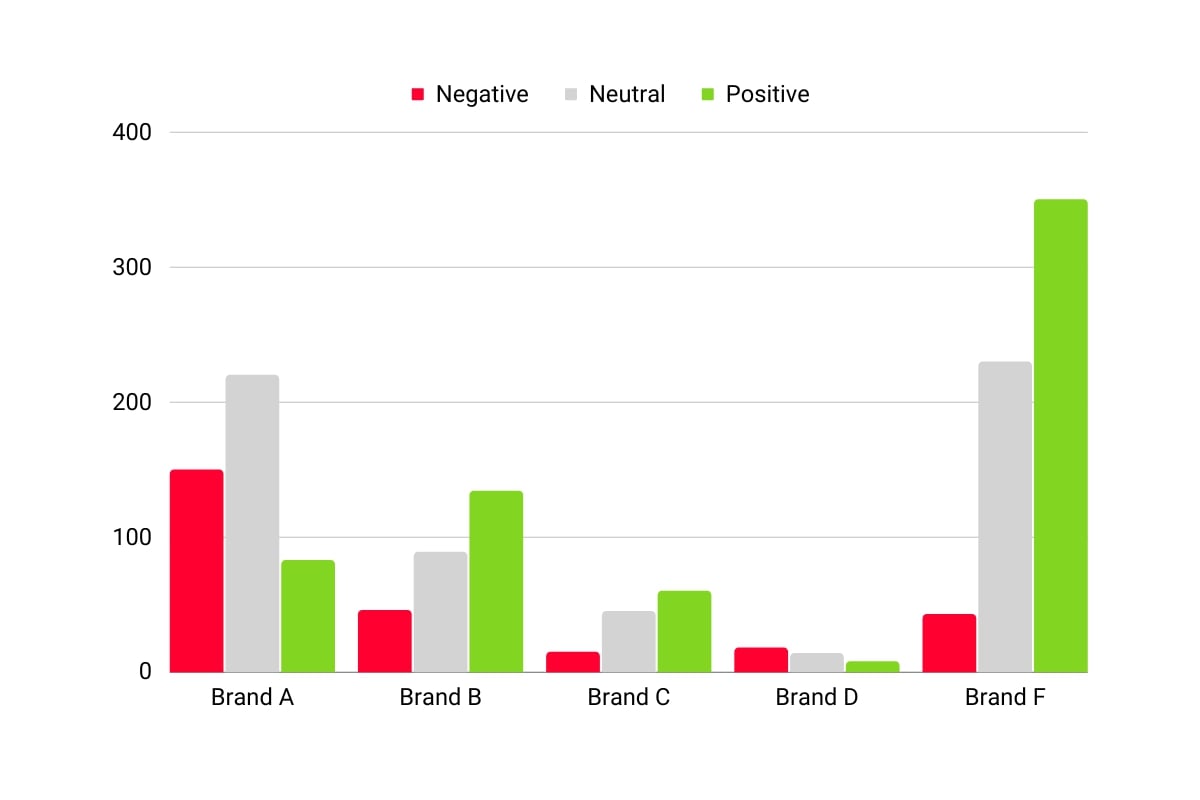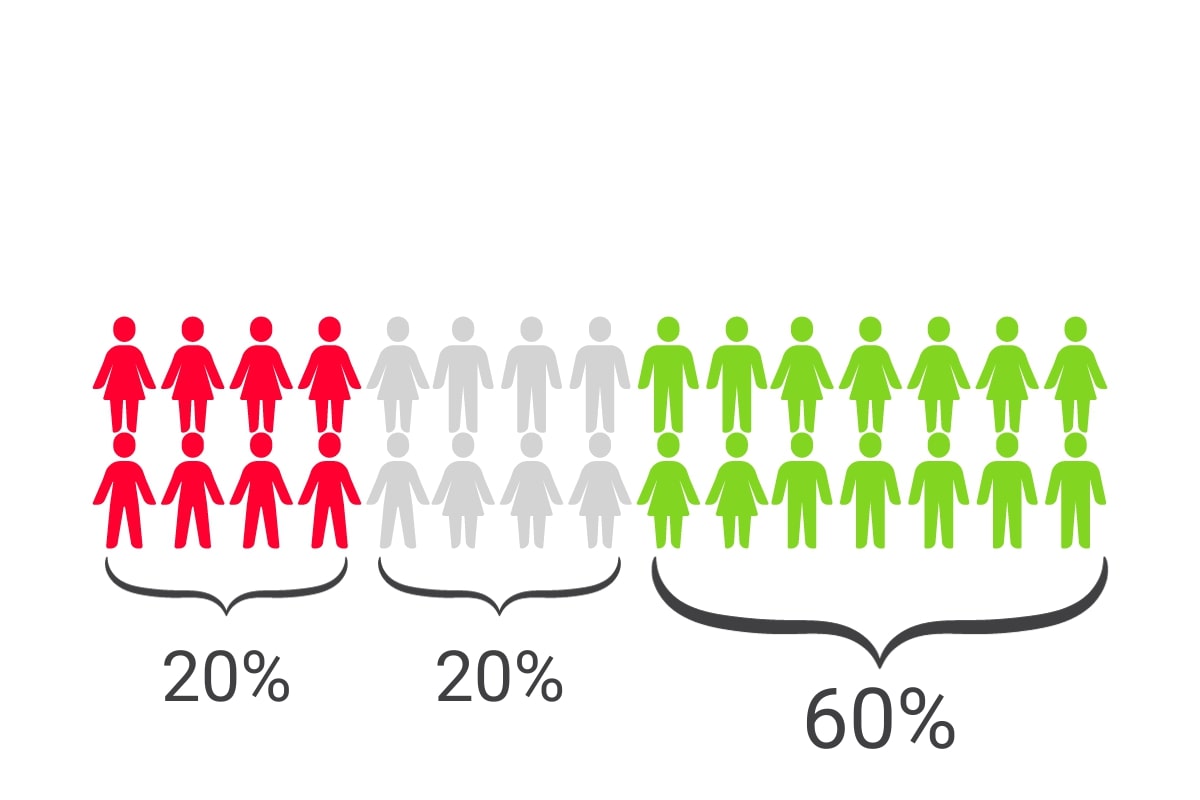In our hyper-connected and data-driven world, understanding the minds and emotions of customers is of paramount importance for businesses.
Given the speed with which online trends come and go as well as the growing number of internet users, marketers need to constantly monitor the media to be able to create strategies that convert users into customers.
One important step when doing media monitoring is to analyze sentiment. Sentiment analysis offers a dynamic lens through which marketers can gain invaluable insights into the thoughts, attitudes, and emotions of their customer base.
Often referred to as opinion mining, sentiment analysis is a computational technique that involves the extraction of subjective information from textual or verbal data.
There are many reasons why marketers should add sentiment analysis to their tools for marketing analytics. By analyzing sentiment, they can:
- enhance consumer understanding and swiftly adapt strategies,
- improve the products and services of their business,
- benchmark against competitors,
- understand individual preferences and create personalized marketing campaigns,
- detect negative coverage in real-time and protect their brand’s reputation by mitigating PR crises, and much, much more.
Table of contents :
- Understanding Sentiment Analysis
- Importance of Sentiment Analysis in Marketing
- Utilizing Sentiment Analysis
- Sentiment Analysis in Market Research
- Challenges and Limitations of Sentiment Analysis
- Benefits of Sentiment Analysis
- The importance of sentiment analysis
Understanding Sentiment Analysis

Sentiment analysis goes beyond traditional market research. It offers real-time insights into customer perceptions and feelings, and it operates on the premise that words and phrases carry emotional weight and meaning.
It discerns sentiment, emotion, or opinion expressed by individuals in various forms of communication, such as social media posts, product reviews, customer feedback, and more.
The process begins with text preprocessing, where raw text is cleaned, tokenized, and transformed into a format suitable for analysis. Then it utilizes natural language processing (NLP) algorithms that recognize and interpret linguistic nuances, context, and emotional cues within the text and categorize this data as positive, negative, or neutral.
Sentiment analysis algorithms can be rule-based, automatic, and hybrid. Rule-based systems perform sentiment analysis based on manually set rules.
Automatic systems rely on machine learning techniques that take large amounts of training data with an existing sentiment label, identify patterns, and then apply the sentiment to new unlabeled data based on the training data, they analyzed.
Finally, hybrid systems combine both rule-based and automatic techniques with the aim of improving the accuracy of sentiment prediction.
Usually, machine learning models are employed to train the system to classify sentiments accurately. These models learn from vast datasets, enabling them to recognize patterns and sentiments in real-world text.
The synergy of text processing and machine learning ensures that sentiment analysis can effectively decipher the complex tapestry of human emotions and opinions, making it an indispensable tool for businesses, researchers, and decision-makers alike.
Importance of Sentiment Analysis in Marketing
The insights that marketers gain from sentiment analysis can be used to refine marketing strategies, strengthen brand loyalty, and ultimately drive business success in an ever-evolving digital landscape. More often than not, emotions are the driving force behind purchase decisions, holding the key to consumer behavior.
By employing sentiment analysis, marketers can tap into this emotional undercurrent and gain a profound insight into the sentiments that shape buying choices. Furthermore, integrating opinion mining into their customer success strategy empowers marketers to proactively address customer needs and build lasting relationships.

Sentiment analysis also acts as a barometer for gauging customer satisfaction and brand perception. It provides a window into how customers perceive your products or services, helping you identify areas of improvement and fortify brand loyalty. The true power of sentiment analysis, however, lies in its ability to transform raw data into actionable insights.
Marketers who have a robust media monitoring process in place know how fast people’s opinions can change. That is why sentiment analysis should be done as part of a continuous monitoring process where marketers can get regular data updates that will provide insights into how their target audiences’ feelings and behaviors change over time.
By harnessing these insights, marketers can tailor their strategies to resonate with their target audience, create personalized campaigns, and ultimately drive business success in an increasingly competitive market.
Utilizing Sentiment Analysis
It can be applied in various facets of modern marketing. Given that social media is often the first place where people turn to express their opinions, notably their discontent, analyzing sentiment on social media should be a marketer’s priority.
There are a lot of platforms on the market that can help you monitor social media activity such as Mention, Talkwalker, or Brandwatch, and most of them will contain a tool for sentiment analysis.
When analyzing social media content, it is important to remain consistent, which means monitoring mentions continuously. By doing so, marketers can:
- detect emerging trends
- assess the impact of marketing campaigns
- engage with their audience more effectively
Moreover, marketers whose current lead generation strategy is based on telemarketing or telesales, which require TCPA compliance, can significantly increase their number of quality leads if they know which types of narratives generate positive emotions in their target audiences online.
Also, sentiment analysis is a cornerstone in monitoring customer reviews and feedback. It allows businesses to dissect the opinions expressed in product reviews, customer surveys, polls from live or on-demand webinars, and feedback forms, offering a wealth of information on what customers appreciate and where improvements are needed.
This proactive approach to customer satisfaction enables organizations to make data-backed decisions, refine their offerings, and enhance the overall customer experience.
Sentiment Analysis in Market Research
In market research, sentiment analysis is especially useful for:
- extracting consumer insights
- benchmarking against competitors
- identifying trends and patterns
Extracting Consumer Insights
Sentiment analysis dives deep into the vast sea of textual data generated by consumers across various platforms. By meticulously scrutinizing product reviews, social media conversations, and customer feedback, businesses can gain a profound understanding of not just what their consumers are saying, but also how they feel.
This provides a nuanced perspective on consumer preferences, pain points, and evolving expectations. This information can then be used to show customers that the business is listening to them and improving their products or services.
Benchmarking Against Competitors
As previously mentioned, there are a lot of media monitoring platforms available online that can help marketers monitor brand mentions in real time. The good thing about these platforms is that marketers can also set up strings or queries to monitor public mentions of their competitors and gauge the public’s sentiment toward them.
This type of competitor benchmarking is very useful when doing market research because marketers can learn how to attract their competitors’ consumers.
For example, imagine that you are comparing the performance of your brand against four competitors and your sentiment analysis shows you that Brand F received the highest number of positive mentions in your monitored period.
This will show you that you need to dig deeper into what Brand F’s customers are saying about them, so you can learn why it is receiving positive coverage.

This can help you gain insights into the type of features customers prefer in your competitors’ offerings, as well as identify gaps in the market by reading about the types of features customers would like certain products or services to have.
With this information, you can create targeted marketing campaigns that will promote these improvements to your products or services, as well as upgrades or new releases.
Identifying Trends and Patterns
Sentiment analysis is also very useful when looking to identify trends and patterns that might otherwise remain hidden because it can detect subtle shifts in consumer sentiment over time.
In the fashion industry, for example, customer purchasing behaviors have started shifting due to increasing discourse around the negative effects of fast fashion on the environment and labor practices.
Fashion brands can use sentiment analysis to analyze these conversations and learn how they can improve their production processes, change their supply chains, and adapt their brand messages, so customers can see them as more sustainable and environmentally friendly.
By monitoring unfolding narratives and following the changes in sentiment, marketers can spot emerging market opportunities, monitor the impact of marketing campaigns (both their own and those of their competitors), and adjust their strategies proactively.
This level of insight is invaluable for staying ahead of the competition and ensuring that products and services remain relevant and appealing in a dynamic marketplace.
Challenges and Limitations of Sentiment Analysis
However advanced, sentiment analysis algorithms may misinterpret nuances, sarcasm, irony, or cultural references, potentially leading to inaccuracies in sentiment classification. For example, a user might write “wow…well isn’t that lovely,” in a sarcastic manner, but the algorithm might register it as positive because of the word “lovely”.
Understanding context and capturing the real sentiment behind complex emotions is not easy for machine models, which is why having a human in the loop helps.
Different languages, dialects, and cultural contexts can profoundly affect the perception of sentiments. What may be seen as a positive sentiment in one culture might register as neutral or even negative in another.
Businesses operating in multiple markets must address this concern by investing in localization services to ensure their sentiment analysis tools accurately identify different languages and cultural aspects. This enhances the accuracy of their analyses and demonstrates a commitment to ethical data practices.
Moreover, sentiment analysis models are trained by humans, and although there are efforts to eliminate inherent biases, those efforts are not always fruitful.

Language used in training data or online content may contain stereotypes related to race, ethnicity, or social class. Sentiment analysis models may inadvertently learn and perpetuate these stereotypes, leading to biased results.
Understanding these limitations is paramount, as overreliance on sentiment analysis results can yield misleading conclusions. By acknowledging these ethical considerations, marketers can harness its potential while upholding cultural sensitivity and the diversity of human expression in our interconnected global landscape.
Benefits of Sentiment Analysis
Let us summarize the five main benefits of sentiment analysis:
1. Informing Market Research
By analyzing vast amounts of textual data from sources like social media, product reviews, and surveys, sentiment analysis can help businesses refine their market research strategies, gain a competitive edge, and stay attuned to evolving consumer demands.
They can understand what customers like or dislike about their products or services, and use this information to improve their market offerings.

2. Enhancing Customer Service
By monitoring sentiment in real-time, companies can swiftly respond to customer feedback, improve service quality, and enhance overall customer satisfaction. Customers nowadays expect brands to be very responsive and instantly solve their grievances.
Marketers can fine-tune their approaches and tailor their messaging to resonate with their audience, ensuring their products and services remain relevant.
3. Managing Brand Reputation
Keeping a vigilant eye on brand sentiment is crucial in today’s digital age. One negative social media post can spiral and cause a full-blown PR crisis. Sentiment analysis helps businesses manage their brand reputation by identifying and addressing negative sentiment promptly.
It enables them to protect their image and build stronger, more trusted relationships with their customer base.
4. Using Data to Inform Decision-making
It transforms raw data into actionable insights. Combined with analytics in marketing reports, it equips decision-makers and marketers with the data-driven intelligence needed to make informed choices regarding marketing strategies, product development, and customer engagement, leading to more effective decision-making.
5. Adapting to Changing Spending Habits
Consumer spending habits evolve, and businesses need to stay agile. People might like a product today, but start hating it tomorrow. Sentiment analysis aids in tracking these shifts, enabling companies to pivot their strategies and offerings to meet new consumer preferences and demands effectively.
6. Analyzing competitors
Sentiment analysis aids businesses in benchmarking against their competitors and gaining valuable insights into their strengths and weaknesses from a customer’s perspective.
By conducting competitor analysis, you can pinpoint areas where your brand excels and identify opportunities for improvement. This information serves as a guide for your strategic decisions, enabling you to distinguish yourself in a crowded marketplace.
The importance of sentiment analysis
In essence, sentiment analysis is the compass that guides marketers toward understanding, connecting with, and satisfying the emotional needs of their customers, thereby paving the way for effective marketing strategies that stand the test of time.
By leveraging sentiment analysis, businesses can harness the power of data to remain agile, responsive, and aligned with their customers’ ever-evolving expectations.
This data-driven approach not only helps marketers enhance customer satisfaction but also propels businesses toward sustainable growth and success in an increasingly competitive landscape.





